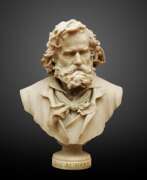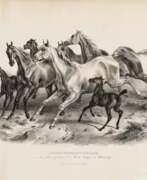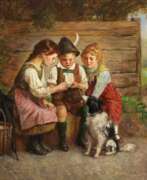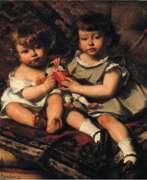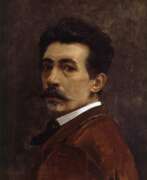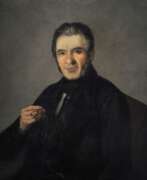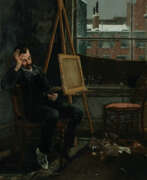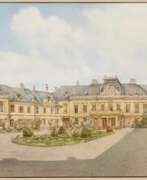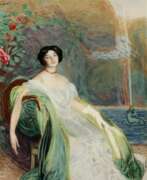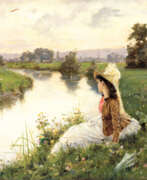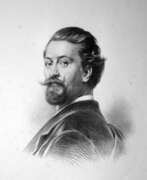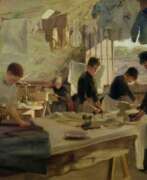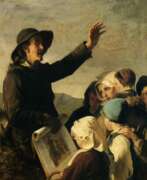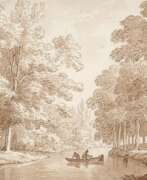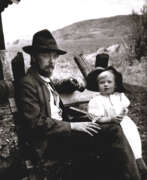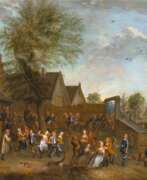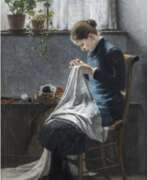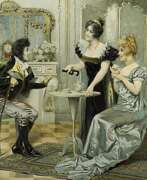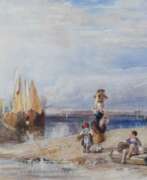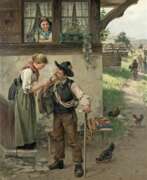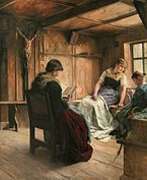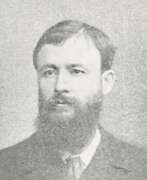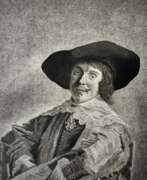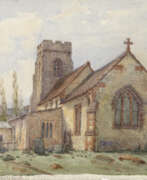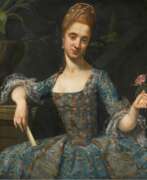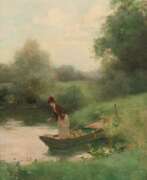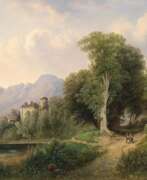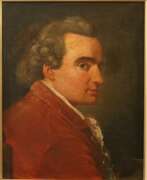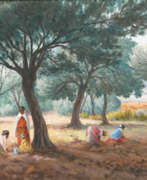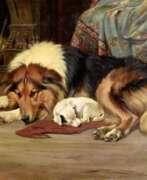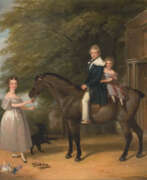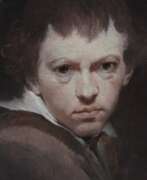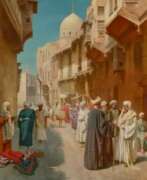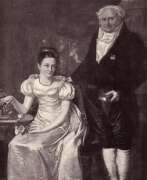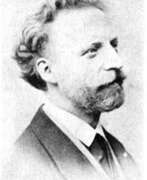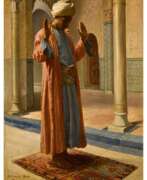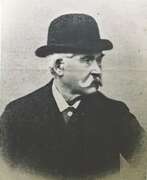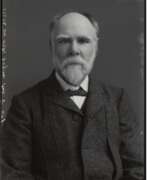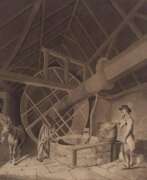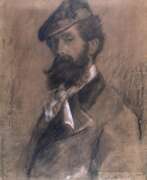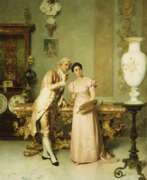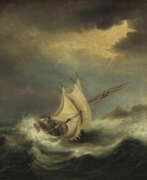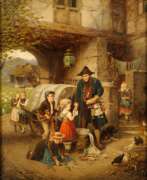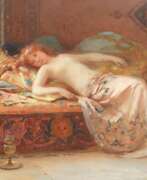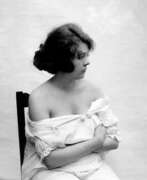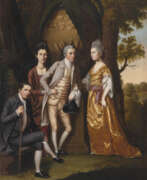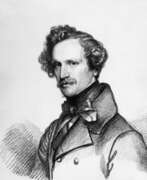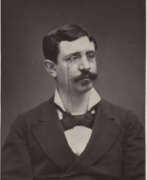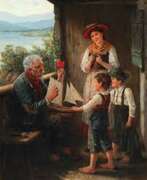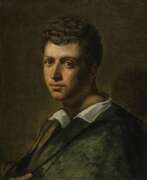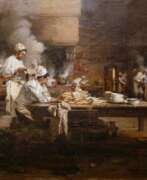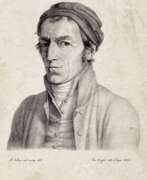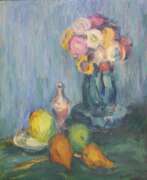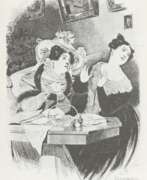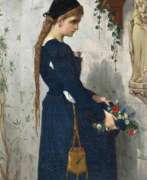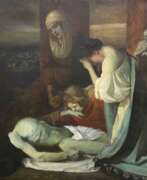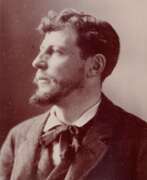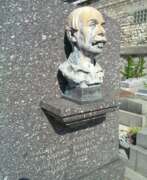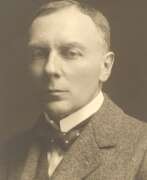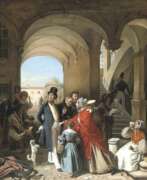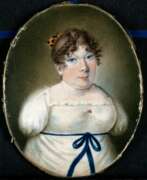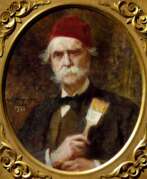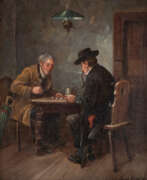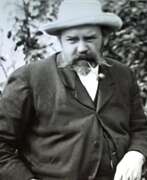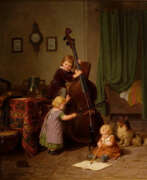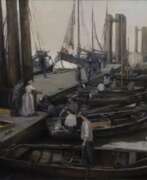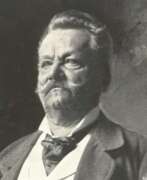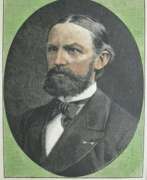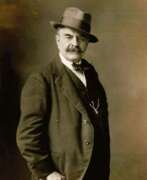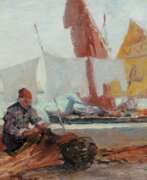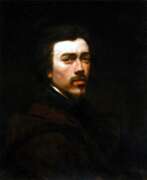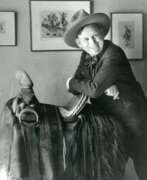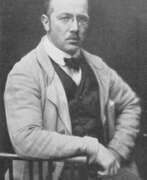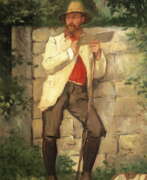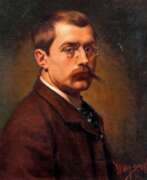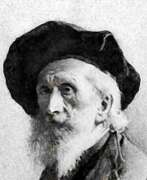Genre painters 19th century
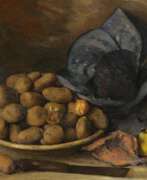

Wilhelm Schmurr was a German painter and co-founder of the Sonderbund in Düsseldorf. His style, characterized by clear expression, was influenced by the Pre-Raphaelites, Symbolists, and Realists. He received several awards and medals for his work and was a member of various art associations. Schmurr taught at the Kunstakademie Düsseldorf and inspired by the farmers after the war, he created scenes of simple life and still lifes. He was awarded the Karl-Ernst-Osthaus-Preis and the Bundesverdienstkreuz erster Klasse and became an honorary member of various artist associations.
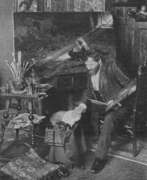

Julius Anton Adam was a German genre painter and animalist who specialised in the depiction of cats and was a member of an influential family of Munich painters.
Julius Anton Adam was a pupil of Professor Michael Echter and later Wilhelm von Dietz at the Munich Academy of Art. He later became a professor himself.
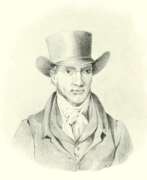

Henry Thomas Alcken was an English painter and engraver chiefly known as a caricaturist and illustrator of sporting subjects and coaching scenes. His most prolific period of painting and drawing occurred between 1816 and 1831.
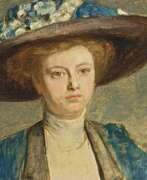

August Allebé was an artist and teacher from the Northern Netherlands. His early paintings were in a romantic style, but in his later work he was an exponent of realism and impressionism. He was a major initiator and promoter of Amsterdam Impressionism, the artist's association St. Lucas, and the movement of the Amsterdamse Joffers. Amsterdam Impressionism – sometimes referred to by art historians as the School of Allebé – was the counterflow to the very strong Hague School in the movement of Dutch Impressionism. As a professor at the Royal Academy of Amsterdam (Rijksakademie van beeldende kunsten) he fostered a cosmopolitan attitude toward art and the promotion and motivation of his students, and provided a significant stimulus to developments in modern art.
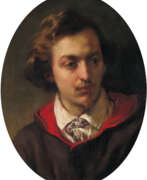

Wilhelm Amberg was a German genre painter. He was educated by the painters Carl Joseph Begas in Berlin and Léon Cogniet in Paris (1845). After this he spent a couple of years in Rome. His paintings are characterized by humour and a poetic atmosphere.
Wilhelm Amberg has won many awards and from 1886 was a Member of the Senate of the Prussian Academy of Arts, Berlin.
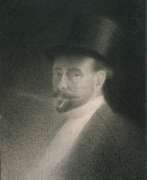

Charles Angrand was a French painter and draftsman known for his Pointillist style and depictions of rural life. Born in Normandy, Angrand moved to Paris in his youth to study art. He was initially influenced by the Realist and Impressionist movements, but later developed his own style of Pointillism, which he applied to landscapes, cityscapes, and genre scenes.
Angrand's Pointillist technique involved the use of small, distinct dots of color that, when viewed from a distance, blended together to create the impression of a more vibrant and luminous image. His work often focused on the people and landscapes of rural France, and he was particularly interested in the effects of light and atmosphere on his subjects.
Angrand exhibited his work at many important exhibitions, including the Salon des Indépendants and the Salon d'Automne in Paris. He was also involved in the Neo-Impressionist movement, which sought to explore the scientific principles of color and optics in painting.
Despite his contributions to the development of Pointillism, Angrand's work was largely forgotten after his death, and it was not until the mid-20th century that he began to be rediscovered by art historians and collectors. Today, his paintings are represented in many important collections, including the Musée d'Orsay in Paris and the Art Institute of Chicago.
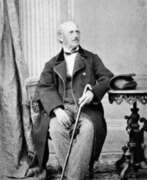

Hermann Anschütz was a German painter of the 19th century. He is known as a painter and teacher who belonged to the Düsseldorf School of painting. He was a professor at the Munich Academy of Fine Arts.
Anschütz painted mythological and historical subjects, as well as landscapes and portraits. A number of his canvases were devoted to oriental themes. In 1860 he was one of the founders of the Munich Christian Art Association.
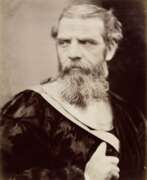

Richard Ansdell was a British painter of animals and genre scenes.
Ansdell's subject matter was compared to that of Edwin Landseer, though critical opinion was that, though popular, his works lacked the latter's emotional impact. His reputation was as a hardworking but occasionally over-proud artist; for instance, he received no royal commissions after refusing to paint Queen Victoria's dogs unless they were brought to his studio.
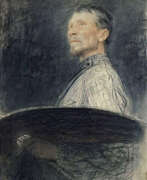

Abram Efimovich Arkhipov (Russian: Абра́м Ефи́мович Архи́пов) was a distinguished Russian realist artist, celebrated for his profound contributions to the world of art through his depictions of Russian peasantry and rural landscapes. Born in the village of Yegorovo, Ryazan Oblast, in 1862, Arkhipov's early life in a peasant family deeply influenced his thematic focus and artistic direction. His education at the Moscow School of Painting, Sculpture and Architecture, and later at the Imperial Academy of Arts, under the tutelage of prominent Russian artists such as Vasily Perov, Vasily Polenov, and Vladimir Makovsky, honed his skills and shaped his artistic vision.
Arkhipov's membership in the art collective The Wanderers and the Union of Russian Artists underscored his commitment to exploring the lives and struggles of Russian women and peasants, themes that recur throughout his work. His realist paintings often depicted the grim realities faced by these subjects, yet he also celebrated their resilience and spirit, as seen in his vibrant portrayals of peasant women in traditional dresses. Furthermore, Arkhipov's dedication to plein air painting allowed him to capture the essence of rural Russia and the northern landscapes with authenticity and emotional depth.
His notable works, such as "The Washer Women" and "Spring Holiday," are celebrated for their intricate depiction of Russian life and culture, providing viewers with a window into the soul of the Russian people. These masterpieces, along with others, have earned places in prestigious museums and galleries, including The Metropolitan Museum of Art, where his work "Ivan Rodin" from 1928 is part of their collection, symbolizing his enduring legacy in the world of art.
For collectors and experts in art and antiques, Arkhipov's works represent not only significant artistic achievements but also important cultural artifacts that offer insights into the historical and social contexts of his time. His paintings are a testament to his skill, sensitivity, and unique perspective on the Russian way of life, making him a pivotal figure in the Russian realist movement.
To stay updated on new product sales, auction events, and more insights into the world of Abram Yefimovich Arkhipov, consider signing up for updates. This subscription is a gateway to exploring the rich tapestry of Russian culture and art, as seen through the eyes of one of its most poignant chroniclers.
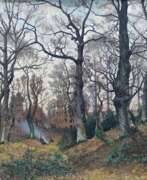

Alphonse Asselbergs was a Belgian painter, primarily of landscapes and forest scenes. Much of his training in art came from Huberti, and he would travel with him in the area around Namur. It was there he befriended Théodore T'Scharner, a student of Ferdinand Marinus, with whom he would go on painting expeditions in the Ardennes. In the summer of 1866, he took an extended trip with Huberti, to the artists' colony at Anseremme, where he was first exposed to the concept of painting en plein aire. In 1867 year he joined the painters at the artists' colony in Tervuren, where he stayed regularly until 1871. The Tervuren Schhol later became known as the Belgian equivalent of the Barbizon School. By 1868, he was receiving good reviews at the salon in Ghent. That same year, he became one of the co-founders of the Société Libre des Beaux-Arts. By 1869, he was exhibiting in Brussels. From 1873 to 1874, he visited Algeria with the watercolorist, Arthur Bouvier. This resulted in a number of Orientalist canvases.
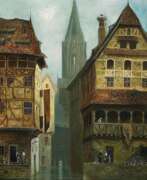

Robert Assmus is a German landscape artist and illustrator. He took lessons from the floral artist Friedrich Wilhelm Völker. He devoted himself entirely to landscape painting, earning a living by illustrating for the newspapers Illustrirte Zeitung, Die Gartenlaube, Daheim magazine and other publications. After the end of the Franco-Prussian War of 1870-1871, he undertook study trips to northern Italy, the Carpathians, Hungary, the Baltic Sea and Switzerland. Inspired by what he saw, he published a magnificent illustrated work, the album “Alsace-Lorraine,” which received positive reviews from the public.
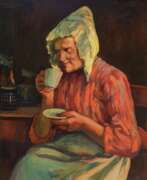

Gottfried Albert Maria Bachem was a German painter and illustrator of the Düsseldorf School. Bachem, who belonged to the Malkasten artists' association from 1921 to 1932, painted portraits, genre scenes and landscapes, and he also illustrated children's books. From 1900 he took part in numerous art exhibitions, including in Berlin.
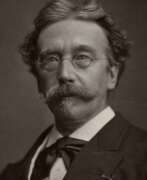

Alexander Hugo Bakker Korff was a 19th-century Dutch genre painter. He was a pupil of the painters Cornelis Kruseman and Huib van Hove. He was trained in the 1840s at the Koninklijke Academie van Beeldende Kunsten in the Hague and the Koninklijke Academie. He became known for his "Bakker Korffjes" – genre pieces of ladies in caps in interiors, that he started painting in 1856 while he was living in Oegstgeest with his sisters as models. In 1870 he was awarded the title ridder in de Leopoldsorde after his works were presented at an exhibition in Brussels in 1869.
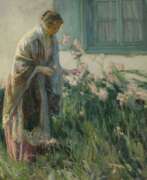

Myron G. Barlow was an American painter and illustrator known for his genre scenes, portraits, and landscapes. He was began his artistic training at the Art Institute of Chicago. Later, he studied at the Académie Julian in Paris, where he was influenced by the Impressionist and Post-Impressionist movements.
Barlow worked as an illustrator for various publications, including Harper's Weekly, Scribner's Magazine, and The Saturday Evening Post. He also taught at the Art Students League in New York City.
Barlow's paintings often depicted everyday life, with a focus on working-class people and their surroundings. His use of color and light gave his paintings a sense of warmth and intimacy.
Barlow was a member of several art organizations, including the National Academy of Design, the Society of American Artists, and the American Watercolor Society. He received numerous awards and honors during his lifetime, including a gold medal at the Panama-Pacific International Exposition in San Francisco in 1915.
Today, his paintings can be found in several museums and institutions, including the National Gallery of Art in Washington, D.C., and the Brooklyn Museum in New York City.
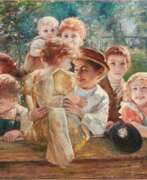

Paul Barthel was a German genre painter and portrait painter. He studied painting from 1877 at the School of Applied Arts in Dresden and then at the Royal Prussian Academy of Arts in Berlin with Julius Ehrentraut and Eugen Bracht.
Paul Barthel worked in Dresden, where he focused mainly on watercolours. In 1922 he settled in Bamberg, where he worked as a restorer.


Jules Bastien-Lepage was a French painter closely associated with the beginning of naturalism, an artistic style that emerged from the later phase of the Realist movement.
His most famous work is his landscape-style portrait of Joan of Arc which currently resides at the Metropolitan Museum in New York City.
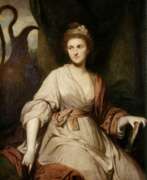

Diana Beauclerk, born Diana Spencer, was an English painter.
Diana Beauclerk was highly gifted, painting portraits, illustrating plays and books, creating designs for Wedgwood's pioneering ceramics and decorating rooms with frescoes.
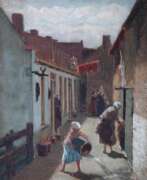

Fridolin Becker was a Dutch painter. Becker studied from 1847 to 1859 at the Koninklijke Academie van Beeldende Kunsten in The Hague, including four years with David Bles. He spent the year 1852 studying in Paris. He was a member of Pulchri Studio. From 1858 to 1860 he worked in Zuilen near Utrecht. He taught at the Hague Art Academy for 33 years.
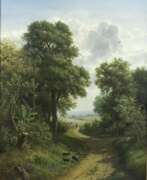

Jan Daniel Beynon was a Dutch-Indonesion landscape, figure and portrait painter. He studied 1848-55 as pupil of C. Kruseman and N. Pieneman at the Amsterdam academy and exhibited in that town repeatedly between 1852 and 1867. In 1855 he returned to the Dutch colony Indonesia; his oeuvre mainly consists of landscapes and persons of that region.
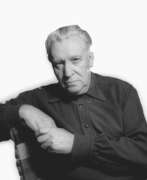

Edmond Bille was a Swiss artist. Bille engaged in intense and varied activity as painter, engraver, stained glass artist, journalist, writer, and politician. He is the creator of the stained glass windows around the altar of the Cathedral of Lausanne, capital of the Swiss canton of Vaud.


Giuseppe Bernardino Bison was an Italian painter celebrated for his mastery in frescoes, landscapes, vedute, capriccios, and religious works. Bison's journey through art took him across Italy, leaving a legacy that bridged the 18th and 19th centuries. His education under the tutelage of Gerolamo Romani and Constantino Cedini at the Accademia of Venice laid the foundation for a career influenced by the luminaries of Venetian painting, such as Tiepolo and Francesco Guardi.
Bison's eclectic and versatile style made him a pivotal figure in prolonging the vedutist tradition. His oeuvre includes a significant number of graphic works alongside his frescoes and easel paintings, which often depicted topographical vedutas and fantasy scenes. He worked in various cities, including Ferrara, Trieste, and Padua, leaving behind numerous palaces and villas adorned with his frescoes.
His art found a market among the affluent non-aristocrats of the time, collaborating with art dealer Tosoni to produce landscapes and vedute that catered to local tastes. Despite his success in places like Trieste, Bison's later years in Milan were marked by smaller commissions and financial struggles.
Bison's works are preserved in esteemed collections worldwide, including the Cooper Hewitt, Princeton University Art Museum, University of Michigan Museum of Art, Clark Art Institute, Detroit Institute of Arts, and the Metropolitan Museum of Art, among others. His paintings, such as "The Arsenale in Venice," "The Hermits of Thebes," and "Capriccio of Padua," continue to captivate audiences with their intricate detail and historical value.
For collectors and experts in art and antiques, Bison's legacy offers a unique glimpse into the transition of Italian painting from the 18th to the 19th century. His ability to blend realism with fantastical elements makes his work a fascinating study in the evolution of European art.
For updates on exhibitions, sales, and auctions related to Giuseppe Bernardino Bison's works, sign up for our newsletter. Stay informed on the latest discoveries and opportunities to acquire pieces by this remarkable Italian artist.
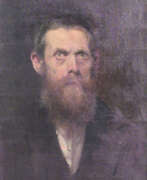

Eugène de Blaas was an Italian painter in the school known as Academic Classicism.
Eugene de Blaas' paintings were exhibited at the Royal Academy, Fine Art Society, New Gallery and Arthur Tooth and Sons Gallery in London, and also at the Walker Art Gallery in Liverpool.
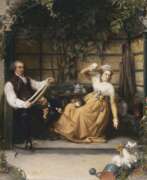

David Bles was a 19th-century painter from the Northern Netherlands. According to the Netherlands Institute for Art History, at the age of thirteen Bles was talented enough to be accepted at the Hague Academy. He attended classes from 1834 to 1837 and from 1838 to 1841. He became a pupil of the painter Cornelis Kruseman and his nephew Jan Adam Kruseman. Bles then travelled to France to study with Joseph-Nicolas Robert-Fleury in Paris. He remained in Paris until 1843 after which he settled in The Hague, though he was a member of the Royal Academy in Amsterdam between 1845 and 1899. He painted scenes from the history of Dutch painting and is best known for portraits and genre paintings.


Ernest Leonard Blumenschein is an American painter, member of the Taos Society of Artists. He is known for his paintings of the American Southwest. He studied at the Cincinnati Academy of Art and the Julian Academy.
Ernest Leonard Blumenschein often depicted Native Americans and landscapes of the Southwest in his paintings. He was known for his masterful use of colour and light, and his works had a strong sense of realism. Blumenschein also worked as an illustrator and writer, and his book Navajo War Dance is considered a classic of Native American literature.
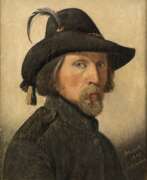

Detlev Conrad Blunck was a German-Danish painter of the first half of the 19th century. He is known as a painter and graphic artist.
Detlev Blunck at the beginning of his career specialized mainly in historical painting, then he moved to the domestic genre and joined the ranks of the masters of domestic realism. Later Blunck devoted his work to religious motifs and developed his own style of painting, which strongly reflected the influence of the Nazarene movement, the German Romantic painters.
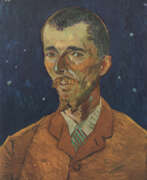

Eugène Boch was a Belgian painter, celebrated for his vibrant contributions to the Post-Impressionist movement. Boch was part of a prominent family known for their fine china business, Villeroy & Boch. He pursued his passion for art in Paris, studying under notable teachers such as Léon Bonnat and Fernand Cormon.
Eugène Boch's artistry is marked by his distinct style and use of color, which earned him spots in prestigious exhibitions like the Salon in Paris during the 1880s. His works, characterized by their emotional depth and innovative techniques, reflect the bold spirit of the Post-Impressionist era. He was not only a painter but also a visionary, whose works resonated with the aesthetic shifts of his time.
One of Eugène Boch's most notable associations was with Vincent van Gogh, who painted Boch in the famous portrait "The Poet," which Van Gogh described as a vision of idealistic and artistic purity. This painting is now housed at the Musée d'Orsay, symbolizing their profound connection and mutual respect. Boch's own works, like "The Red Roofs," demonstrate his unique ability to blend reality with his visionary outlook, showcasing scenes filled with vivid colors and dynamic compositions.
Eugène Boch's legacy extends beyond his paintings. Upon his death in 1941, he left a significant impact on the cultural heritage of Europe, influencing future generations of artists. His works continue to be celebrated in major museums and galleries, reminding us of his pivotal role in the development of modern art.
For collectors and experts in art and antiques, Boch's works offer a timeless exploration of Post-Impressionist vibrancy. Sign up for updates and stay informed about new sales and auction events featuring Eugène Boch’s timeless works, ensuring you never miss an opportunity to own a piece of art history.
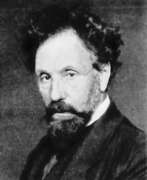

Nikolai Kornilievich Bodarevsky (Russian: Николай Корнилиевич Бодаревский) was a Russian and Ukrainian artist of the last third of the 19th and early 20th centuries of Moldavian origin. He is known as a painter and graphic artist.
Nikolai Bodarevsky created portraits, landscapes and genre paintings. During the early period of his creativity, he was close to the Itinerants, in later years he departed from the Itinerant traditions in the direction of the late "salon" academism. His works are in many museum collections, including the State Tretyakov Gallery in Moscow and the State Russian Museum in St. Petersburg.
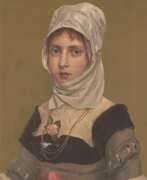

Alphons Bodenmüller was a German genre and history painter.
Bodenmüller studied at the Munich Academy of Fine Arts from 1864 with Arthur von Ramberg, later with Wilhelm von Lindenschmit the Younger. From 1874 he regularly took part in art exhibitions in Munich and other German cities. In 1877 he received the 1st Academy Prize for his painting Der erste Schäfflertanz zu München im Pestjahr 1517.
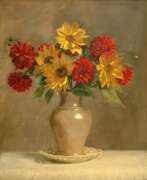

Theodor Bonenberger is a German painter and cavalry officer. He studied with Jacob Grunenwald and Karl von Geberlin at the Stuttgart Art School, then from April 30, 1887 - at the Royal Academy of Arts in Munich with Johann Kaspar Herterich and Carl von Marr. Has been on study trips to Italy, France, Spain and the UK. After completing his studies, he settled in Munich as a freelance artist. Bonenberger also held the rank of major in the cavalry in reserve. From 1895 he took part in many exhibitions in Munich, Düsseldorf and Vienna. In 1936, he completed a portrait of Adolf Hitler, which he presented to Eva Braun for her birthday. He dealt with flower, genre, portrait, landscape and nude painting.
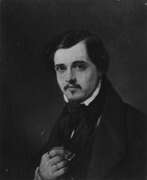

Charles Bonier was a Belgian artist, celebrated for his contributions to painting, lithography, and aquarelle. Born in Brussels in 1814, Baugniet's artistic journey began at the Académie Royale des Beaux-Arts, where he honed his skills under notable instructors. His early forays into lithography, starting in 1827, set the stage for a distinguished career that would intertwine with the cultural and historical fabric of the 19th century.
Charles Boniers artistry gained prominence with his lithographic portraits, particularly those featured in L'Artiste magazine in 1833. His collaboration on a series of portraits for the Belgian House of Representatives further solidified his reputation. However, it was his court appointment as a painter to the Belgian Royal Family in 1841 that marked a significant milestone, elevating his status and expanding his influence beyond Belgian borders.
In 1843, Charles Boniers talents took him to London, where he became a sought-after portraitist among the elite, capturing the likenesses of figures like Prince Albert, Charles Dickens, and Hector Berlioz. His move to Paris in 1860 coincided with the rise of photography, yet Bonier adeptly transitioned, focusing on paintings that reflected the Second French Empire's elegance.
Today, collectors and art enthusiasts cherish Charles Boniers works for their historical value and artistic merit. His ability to capture the essence of his era and subjects makes his art a prized possession in galleries and collections worldwide.
For those fascinated by the intersection of art, culture, and history, Charles Boniers oeuvre offers a compelling glimpse into the 19th century's artistic and societal landscapes. To stay informed about new discoveries and auction events related to Charles Boniers works, sign up for updates and delve deeper into the legacy of this remarkable artist.
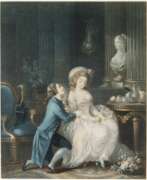

Louis-Marin Bonnet (French: Louis-Marin Bonnet) is a French draftsman and engraver, an outstanding master of metal engraving using the “pencil style” technique. Since 1757, Louis-Marais Bonnet was a student of Jean-Charles Francois, then of Gilles Demarteau. He became famous for his color engravings reproducing drawings by A. Watteau, F. Boucher, Sh.-A. Van Loo, J.-B. Yue. Bonnet reproduced mainly complex pastel drawings, using up to eighty boards per engraving. He used opaque paints that gave a matte tone and tinted paper. He reproduced the spaces by printing with white from a separate board. Bonnet even imitated the golden frames bordering the original drawings. This technique is called “pastel style”. In 1769, Bonnet described his technique in detail in the book Pastel in Engraving, Invented and Executed by Louis Bonnet. In 1765-1767, the French master worked in St. Petersburg, where he completed several engraving portraits in the “pencil style” of Catherine II and the heir Pavel Petrovich based on drawings by Jean-Louis de Velli, then returned to Paris and opened his own workshop.
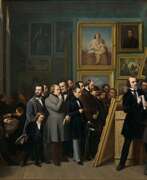

Friedrich Boser, full name Karl Friedrich Adolf Boser was a German genre painter and portrait painter of the Düsseldorf school.
Friedrich Boser first studied painting at the art academies in Dresden and Berlin, from 1837 he attended the 2nd class of historical painting at the Düsseldorf Academy of Arts. From 1841 to 1843 he studied genre and portrait painting there, which he has been mainly engaged in ever since.
Friedrich Boser paid great attention to the subtlety of painting and the detailed study of objects. He also tried his hand at literary subjects.
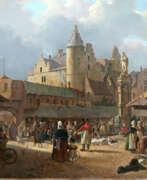

François-Antoine Bossuet was a painter and draughtsman of the Belgian school. Bossuet is known for his depictions of the landscapes, cities and monuments of Spain and Italy, with an emphasis on historic places, occasionally with genre scenes of everyday life. He is noted for the excellence of perspective in his paintings. He was professor at the Academy of Fine Arts in Brussels, from 1855 until 1876. His works may be seen in the Royal Museum of Fine Arts, Antwerp, the Royal Museums of Fine Arts of Belgium in Brussels, and the Victoria and Albert Museum in London.
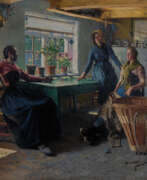

Aloïs Boudry was a Belgian painter known for his portraits, still lifes and interiors. He studied at the art schools in Ypres and Roeselare and finished at the Royal Academy of Fine Arts (Antwerp). In 1885, he joined "Als ik Kan" (If I Can), an association of visual artists devoted to preserving traditional methods. He participated in the exposition "Brussels International 1910", where he won a silver medal. When the seaside resort of Knokke-Heist began a promotional campaign in 1913, he designed the posters, which became well-known. At the outbreak of World War I, he fled to England and established himself as a portraitist. Wherever he was, he sought out humble people as the subjects for his paintings. His depictions of the fisherman of Nieuwpoort are especially popular. Many of them can be seen at the National Fishery Museum in Oostduinkerke.
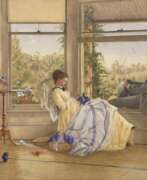

Emma Minnie Boyd, born Emma Minnie Beckett, was an Australian artist. She exhibited publicly between 1874 and 1932 with the Victorian Society of Artists, the International Centenary Exhibition of 1888 (Melbourne), the Royal Academy of Arts (London) and in a joint exhibition with her husband at Como House in Melbourne in 1902.
Emma Minnie Boyd had a talent for watercolour landscapes, although she painted in both watercolour and oil, depicting interiors, figures, portraits, still lifes and floral studies. She is part of the Boyd artistic dynasty that began with Emma and her husband Arthur.
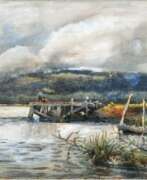

Arthur Merric Boyd was an Australian painter. He and his wife Emma Minnie (née à Beckett) established a lifestyle of being artists which many generations followed to create the popular image of the Boyd family. Boyd travelled and painted a good deal on the continent of Europe, and returned to Australia about the end of 1893, where he lived mostly in Sandringham and other suburbs of Melbourne for the rest of his life. He occasionally sent good work to the exhibitions of the Victorian Artists' Society, but never mixed much in the artistic life of his time.
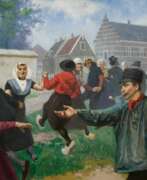

Johan Coenraad Braakensiek was a Dutch painter, illustrator and political cartoonist. For most of his career, Braakensiek worked for a number of publishers as an illustrator. However, he also found work as a political cartoonist for the magazines Geïllustreerd Politie-Nieuws, De Amsterdammer and De Groene Amsterdammer. His first work was with Geïllustreerd Politie-Nieuws where he contributed infrequently. His break and rise in popularity came in 1886 when he was made the political cartoonist for De Amsterdammer magazine. He also was affiliated with De Groene Amsterdammer magazine from 1925 to 1931. Braakensiek remains popular thanks to the books he worked on as illustrator. Books such as Van Allerlei Slag and Uit het leven van Dik Trom, which feature his art are widely known and read.
